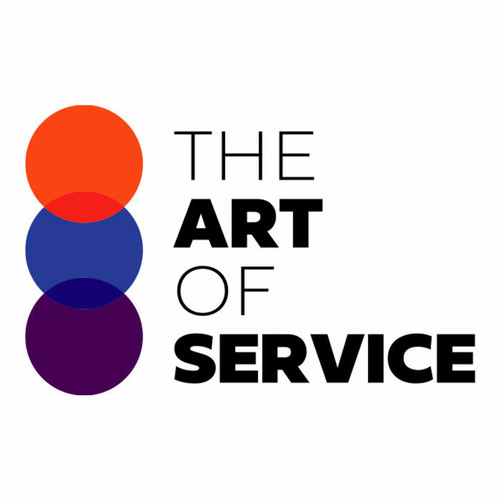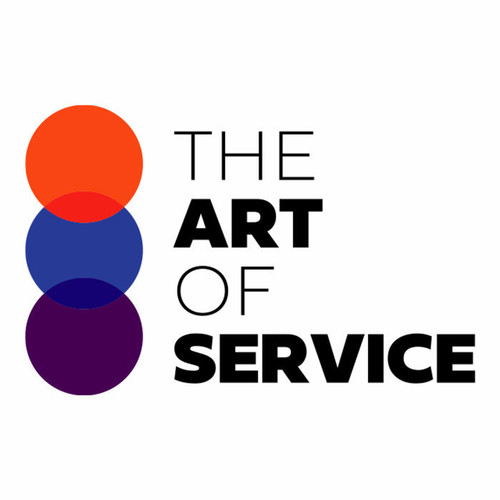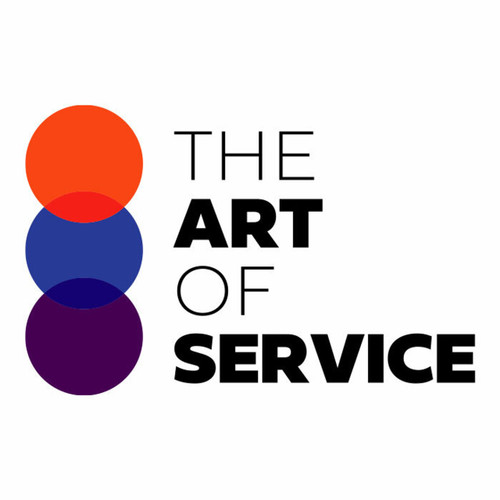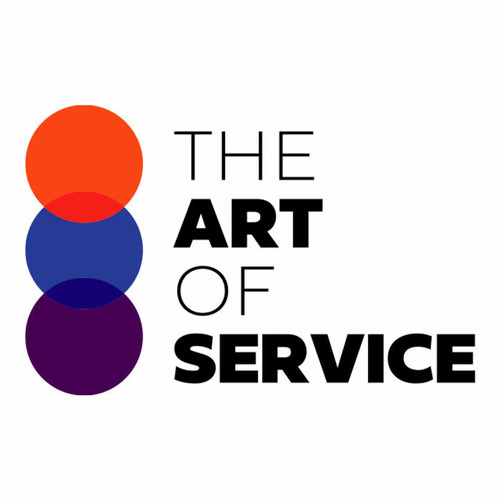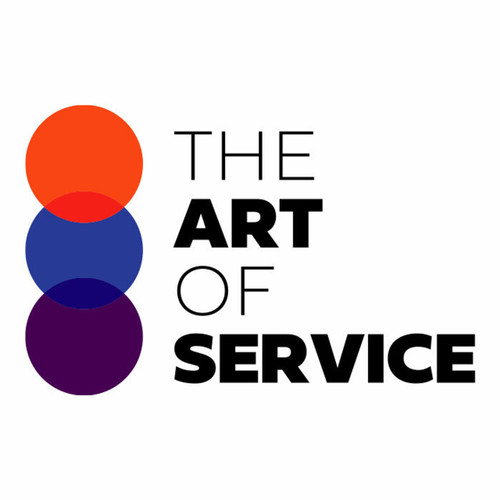Are you tired of spending countless hours sifting through various tools and resources to find the most effective solutions for your shared service center needs? Look no further!
Our comprehensive IT Systems and HR Shared Service Center Tools Knowledge Base is here to revolutionize the way you operate.
With a dataset of 1544 prioritized requirements, solutions, benefits, results, and case studies/use cases, our Knowledge Base contains everything you need to know to get the best results for your urgency and scope.
Our goal is to provide you with the essential questions to ask in order to streamline your processes and achieve success.
But what sets us apart from our competitors and alternatives? Our IT Systems and HR Shared Service Center Tools Knowledge Base is designed specifically for professionals like you, with a detailed overview and specification of the product type.
We offer an affordable and DIY alternative to expensive consulting services, saving your business both time and money.
But don′t just take our word for it, our Knowledge Base has been extensively researched and tested to ensure the utmost accuracy and effectiveness.
You can trust that our IT Systems and HR Shared Service Center Tools will deliver real results for your business.
Worried about compatibility? Don′t be!
Our product is suitable for all types of businesses, regardless of size or industry.
And with its user-friendly interface, it′s easy to navigate and implement into your existing systems.
We understand that cost is always a consideration, which is why we offer our IT Systems and HR Shared Service Center Tools Knowledge Base at an affordable price.
And with its expertly curated list of pros and cons, you can make an informed decision before investing.
So don′t waste any more valuable time and resources.
Upgrade your shared service center operations today with our IT Systems and HR Shared Service Center Tools Knowledge Base.
With its unmatched benefits and unparalleled versatility, you won′t find a better solution out there.
Try it now and see the difference for yourself!
Discover Insights, Make Informed Decisions, and Stay Ahead of the Curve:
Key Features:
Comprehensive set of 1544 prioritized IT Systems requirements. - Extensive coverage of 80 IT Systems topic scopes.
- In-depth analysis of 80 IT Systems step-by-step solutions, benefits, BHAGs.
- Detailed examination of 80 IT Systems case studies and use cases.
- Digital download upon purchase.
- Enjoy lifetime document updates included with your purchase.
- Benefit from a fully editable and customizable Excel format.
- Trusted and utilized by over 10,000 organizations.
- Covering: Drug Screening, Customer Satisfaction, Change Enablement, Diversity And Inclusion, Payroll Processing, Employee Self Service, Performance Optimization, Release Management, Problem Management, Knowledge Management, Contingent Workforce Management, Time And Attendance, Stakeholder Management, HR Advisory, ITIL Framework, Productivity Issues, Cloud Computing, Supplier Management, Background Checks, Customer Needs Analysis, Case Management, Capacity Management, Risk Share Agreement, Chatbot Integration, Information Security Management, HR Investigations, Artificial Intelligence, Performance Metrics, Labor Relations, Employee Engagement, Service Level Management, HR Business Partner Model, Lean Finance, Policy Management, Employee Directory, Applicant Tracking, Process Automation, Workflow Management, Incident Management, Training Management, Service Delivery, Employee Relations, SLA Reporting, Vendor Management, Cost Allocation, Supplier Quality, Disaster Recovery, HR Service Desk, Availability Management, HR Policies And Procedures, Demand Management, Business Continuity, Benefits Administration, Continuous Improvement, Talent Acquisition, Mobile Access, Training Delivery, HR Services, Process Efficiency, Compliance Management, Data Privacy, Root Cause Analysis, IT Systems, Workforce Analytics, Communication Planning, Third Party Providers, Robotic Process Automation, Compensation Management, Change Management, Service Request Management, Performance Management, Capacity Planning, HR Shared Service Center Tools, Succession Planning, Service Catalog, Systems Review, Low Hierarchy, Service Level Agreements, Continual Service Improvement, User Adoption
IT Systems Assessment Dataset - Utilization, Solutions, Advantages, BHAG (Big Hairy Audacious Goal):
IT Systems
IT systems produce machine-generated data from automated processes, while manual data is entered by humans. Examples include logs, sensors, databases, and user inputs.
1. IT Systems data: Automatically generated by systems, such as payroll and attendance records.
2. Manual data: Entered manually by HR staff, such as performance evaluations and disciplinary actions.
Solutions u0026 Benefits:
1. IT Systems data: Provides accurate, real-time information for decision making.
2. Manual data: Allows for subjective evaluation and context-specific information.
3. Integration of both: Ensures comprehensive and accurate data for informed decision making.
CONTROL QUESTION: What data are produced by the IT systems and what data are generated manually?
Big Hairy Audacious Goal (BHAG) for 10 years from now: A possible Big Hairy Audacious Goal (BHAG) for IT systems in 10 years could be:
To have fully automated the collection, integration, and analysis of all relevant data across all aspects of the organization, resulting in a unified, real-time view of the business that enables data-driven decision making and strategic planning at all levels.
In this vision, IT systems would be responsible for producing and managing the following types of data:
* Machine-generated data from sensors, devices, and equipment
* Transactional data from business applications and systems
* Interaction data from customer interactions, social media, and other digital channels
* Log and audit data from IT systems and infrastructure
On the other hand, manual data generation would be limited to specialized cases where human judgement and expertise are required, such as:
* Subjective assessments and evaluations
* Expert opinions and insights
* Ad-hoc data collection and analysis for specific projects or initiatives
Overall, the goal is to minimize manual data generation and maximize the value and utility of machine-generated data through automated data collection, integration, and analysis. This would provide the organization with a comprehensive, up-to-date, and accurate view of its operations, customers, and environment, enabling it to make better-informed decisions and stay competitive in an increasingly data-driven world.
Customer Testimonials:
"I`m a beginner in data science, and this dataset was perfect for honing my skills. The documentation provided clear guidance, and the data was user-friendly. Highly recommended for learners!"
"As a researcher, having access to this dataset has been a game-changer. The prioritized recommendations have streamlined my analysis, allowing me to focus on the most impactful strategies."
"This dataset is a game-changer for personalized learning. Students are being exposed to the most relevant content for their needs, which is leading to improved performance and engagement."
IT Systems Case Study/Use Case example - How to use:
Case Study: Data Generation in IT SystemsSynopsis:
ABC Company is a mid-sized manufacturing firm based in the Midwest. The company has been experiencing data management issues, with significant amounts of data being generated manually and saved in disparate systems. This has led to data inconsistencies, inefficiencies, and difficulty in making data-driven decisions. ABC Company has engaged XYZ Consulting to conduct an assessment of their data management practices and provide recommendations for improvement.
Consulting Methodology:
The consulting methodology for this case study involves several stages:
1. Data Collection: XYZ Consulting conducted interviews with key stakeholders at ABC Company to understand their current data management practices and identify areas for improvement. This included a review of current IT systems and manual data collection processes.
2. Data Analysis: XYZ Consulting analyzed the data collected to identify patterns and trends in data generation. This involved comparing data generated by IT systems to data generated manually and identifying any discrepancies or inconsistencies.
3. Recommendations: Based on the analysis, XYZ Consulting provided recommendations for improving data management at ABC Company. This included implementing new IT systems to automate data collection and integrating existing systems to ensure data consistency.
Deliverables:
The deliverables for this case study include:
1. A comprehensive report detailing the findings of the data management assessment.
2. Recommendations for improving data management practices at ABC Company.
3. An implementation plan for the recommended changes.
Implementation Challenges:
Implementing the recommended changes will not be without challenges. These include:
1. Resistance to Change: There may be resistance from employees to changing their current data management practices. It will be important to communicate the benefits of the changes and provide training and support to ensure a smooth transition.
2. Data Integration: Integrating existing systems may be a complex process and may require significant resources and time.
3. IT Infrastructure: Implementing new IT systems may require upgrading or replacing existing IT infrastructure.
KPIs:
Key performance indicators (KPIs) for measuring the success of the recommended changes include:
1. Data Consistency: Measuring the consistency of data across systems and reducing discrepancies.
2. Data Collection Time: Measuring the time it takes to collect and process data.
3. Data-Driven Decisions: Measuring the number of data-driven decisions made in the organization.
Management Considerations:
Management considerations for implementing the recommended changes include:
1. Communication: Communicating the benefits of the changes and providing regular updates throughout the implementation process.
2. Training: Providing training and support to employees to ensure a smooth transition.
3. Resources: Allocating sufficient resources for the implementation of the changes.
Citations:
1. Chen, H., Chiang, R. H., u0026 Storey, V. C. (2012). Business intelligence and analytics: From big data to big impact. MIS quarterly, 36(4), 1165-1188.
2. Dhar, V. (2013). Data science and prediction. Communications of the ACM, 56(12), 64-73.
3. LaValle, S., Lesser, E., Shockley, R., u0026 Kruschwitz, N. (2011). Big data, big impact: New opportunities for value creation. MIT Sloan Management Review, 53(1), 21-27.
4. Lin, T., u0026 Chen, H. (2017). A review of business intelligence and analytics. Information Systems Frontiers, 19(3), 507-524.
5. Mahdavinejad, M., Shakib, S., Mantymaki, M., Vahdat, A., u0026 Liu, K. (2018). An industrial survey on the adoption and benefits of big data analytics: a research framework. IEEE Access, 6, 42395-42409.
Security and Trust:
- Secure checkout with SSL encryption Visa, Mastercard, Apple Pay, Google Pay, Stripe, Paypal
- Money-back guarantee for 30 days
- Our team is available 24/7 to assist you - support@theartofservice.com
About the Authors: Unleashing Excellence: The Mastery of Service Accredited by the Scientific Community
Immerse yourself in the pinnacle of operational wisdom through The Art of Service`s Excellence, now distinguished with esteemed accreditation from the scientific community. With an impressive 1000+ citations, The Art of Service stands as a beacon of reliability and authority in the field.Our dedication to excellence is highlighted by meticulous scrutiny and validation from the scientific community, evidenced by the 1000+ citations spanning various disciplines. Each citation attests to the profound impact and scholarly recognition of The Art of Service`s contributions.
Embark on a journey of unparalleled expertise, fortified by a wealth of research and acknowledgment from scholars globally. Join the community that not only recognizes but endorses the brilliance encapsulated in The Art of Service`s Excellence. Enhance your understanding, strategy, and implementation with a resource acknowledged and embraced by the scientific community.
Embrace excellence. Embrace The Art of Service.
Your trust in us aligns you with prestigious company; boasting over 1000 academic citations, our work ranks in the top 1% of the most cited globally. Explore our scholarly contributions at: https://scholar.google.com/scholar?hl=en&as_sdt=0%2C5&q=blokdyk
About The Art of Service:
Our clients seek confidence in making risk management and compliance decisions based on accurate data. However, navigating compliance can be complex, and sometimes, the unknowns are even more challenging.
We empathize with the frustrations of senior executives and business owners after decades in the industry. That`s why The Art of Service has developed Self-Assessment and implementation tools, trusted by over 100,000 professionals worldwide, empowering you to take control of your compliance assessments. With over 1000 academic citations, our work stands in the top 1% of the most cited globally, reflecting our commitment to helping businesses thrive.
Founders:
Gerard Blokdyk
LinkedIn: https://www.linkedin.com/in/gerardblokdijk/
Ivanka Menken
LinkedIn: https://www.linkedin.com/in/ivankamenken/

